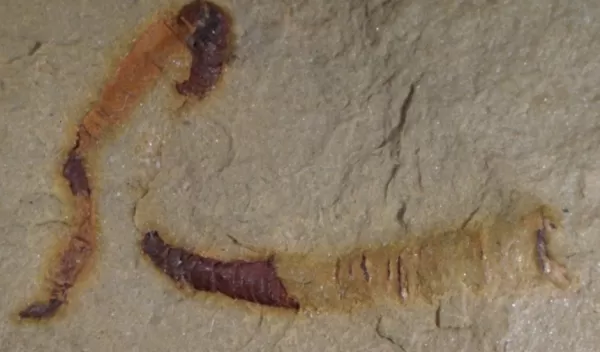
Scientists find oldest-known fossilized digestive tract — 550 million years
A 550-million-year-old fossilized digestive tract found in the Nevada desert could be a key to understanding the early history of animals on Earth.
More than a half-billion years ago, life on Earth consisted of simple ocean organisms unlike anything living in today's oceans. Then, beginning about 540 million years ago, animal structures changed dramatically.
During this time, ancestors of many animal groups we know today appeared, such as primitive crustaceans and worms. For years scientists did not know how these two seemingly unrelated communities of animals were connected, until now.
An NSF-funded analysis of tubular fossils led by Jim Schiffbauer at the University of Missouri provides evidence of a 550-million-year-old digestive tract -- one of the oldest known examples of fossilized internal anatomical structures -- and reveals what scientists believe is a possible answer to the question of how these animals are connected.
The study was published in Nature Communications.
"Not only are these structures the oldest guts yet discovered, they help resolve the long-debated evolutionary positioning of this important fossil group," said Schiffbauer. "These fossils fit within a very recognizable group of organisms -- the cloudinids -- that scientists use to identify the last 10 to 15 million years of the Ediacaran Period, the period of time just before the Cambrian Explosion. We can now say that their anatomical structure appears much more worm-like than coral-like."
The Cambrian Explosion, beginning 541 million years ago, is widely considered to be the point in Earth's history when the ancestors of many animal groups we know today emerged.
In this study, the scientists used a unique analytical approach -- micro-CT imaging -- that created a digital 3D image of the fossil. The technique allowed the scientists to view what was inside the fossil structure.
"This work shows that the discovery of new fossil material and improved technological advances have allowed us to learn much more about the nature of early animals," says Dena Smith, a program director in NSF's Division of Earth Sciences.


